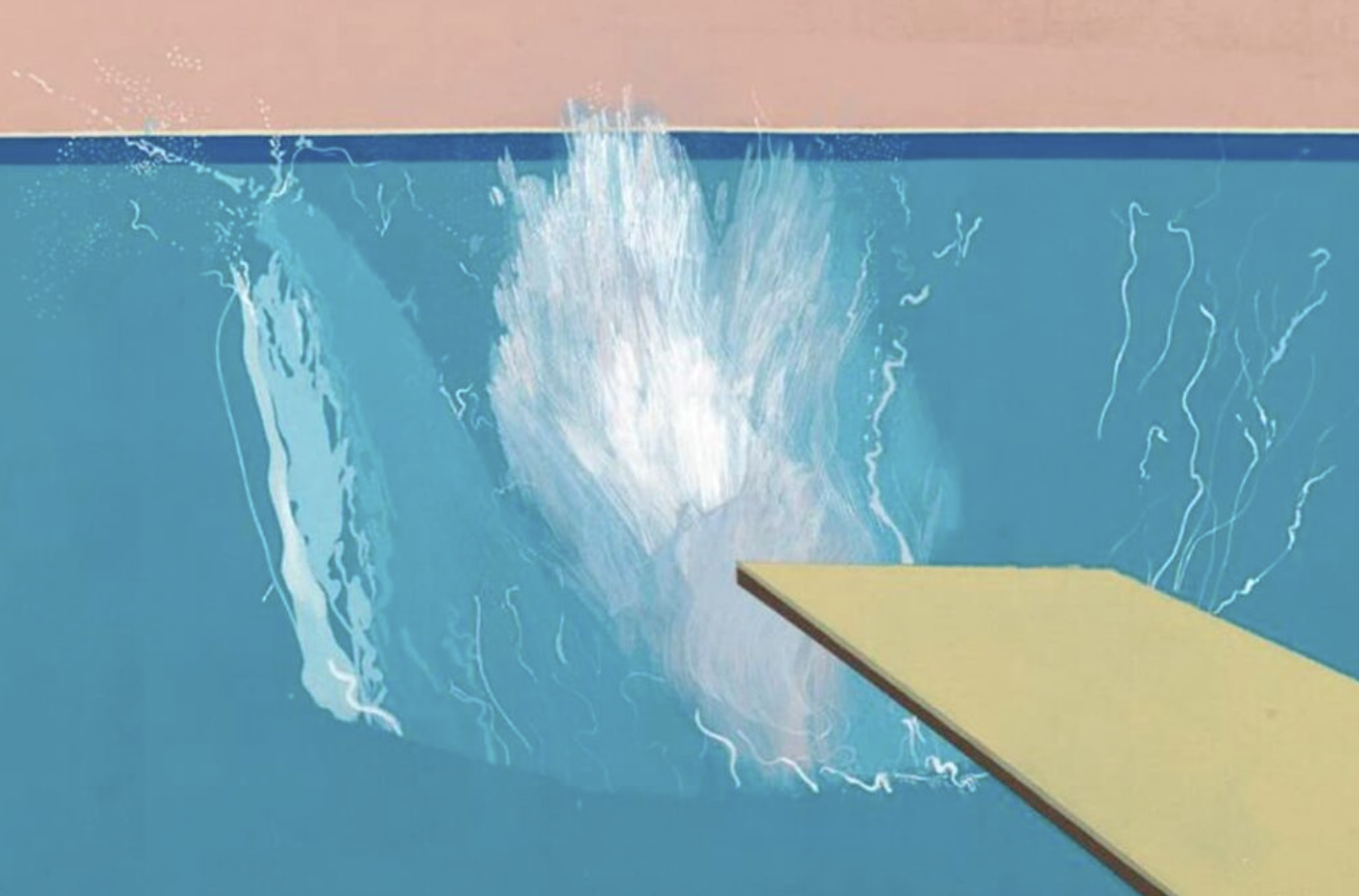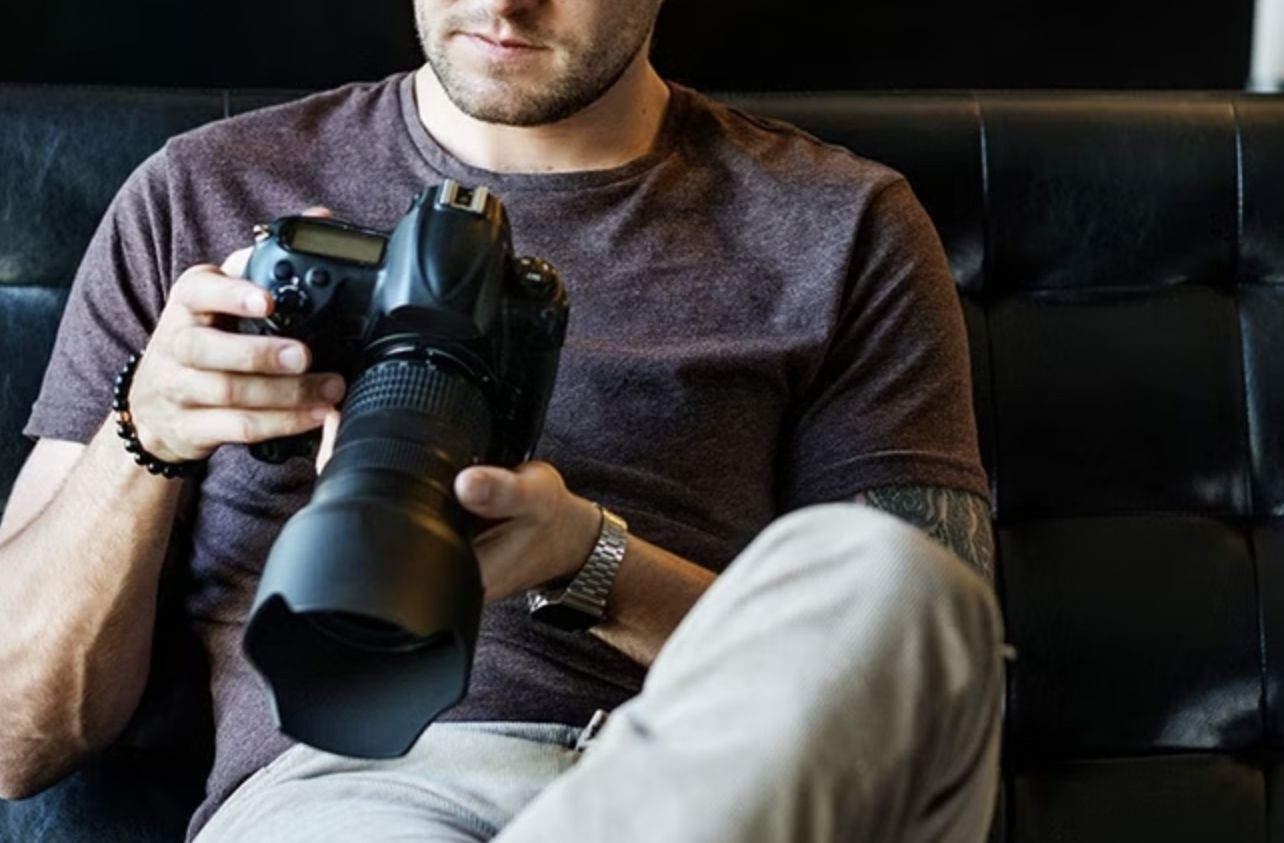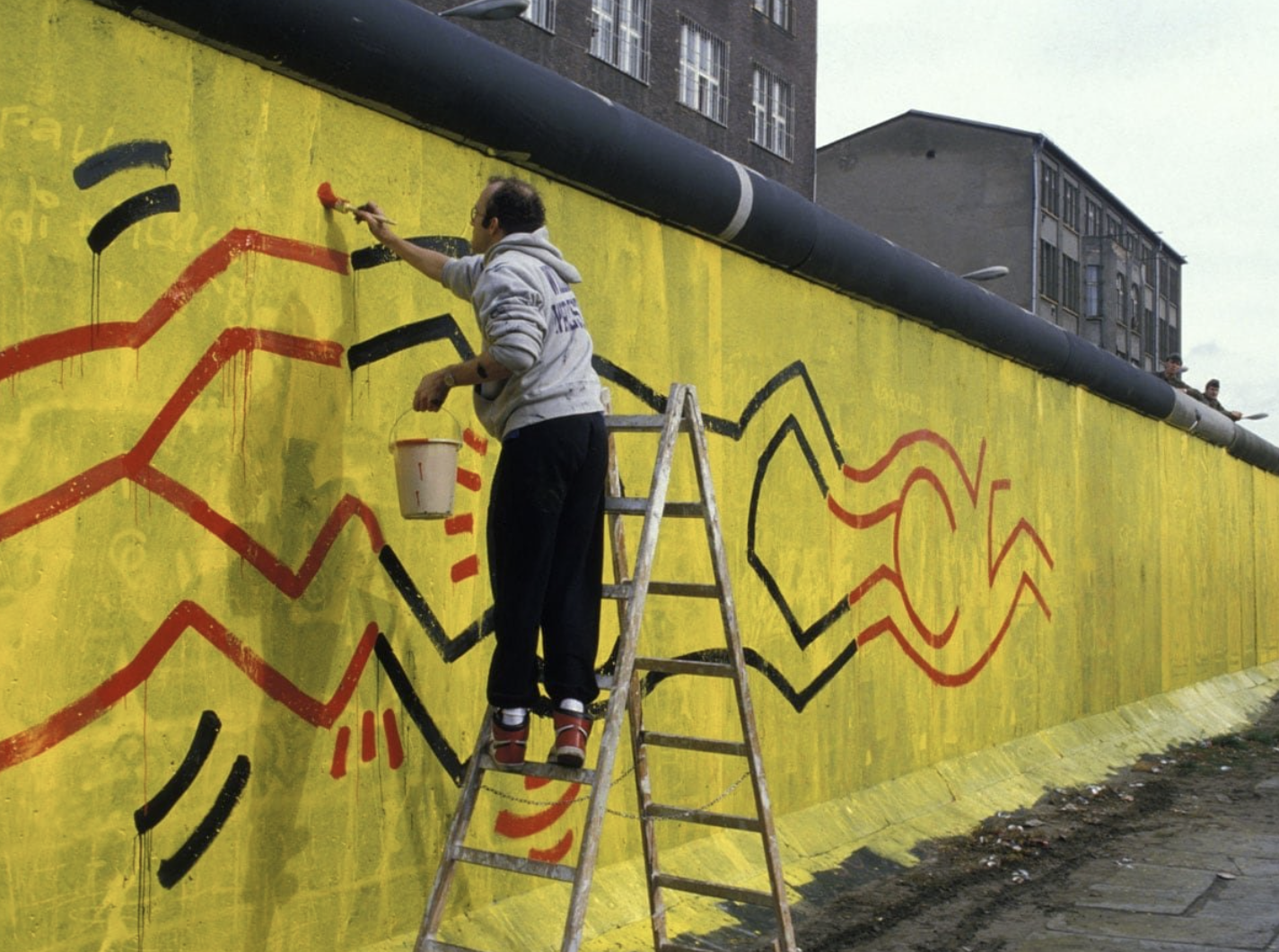
David Hockney’s A Bigger Splash, painted in 1967, stands as one of his most celebrated works. This acrylic on canvas, now housed in the Tate Gallery in London, is often hailed as a defining piece of 1960s art. What sets it apart from other works of the era is the white border around the canvas, reminiscent of the frame of a Polaroid photograph. This simple yet striking detail draws attention to the boundary between the painting and the viewer, highlighting the moment captured in time.
A Passion for Pools
While A Bigger Splash is perhaps Hockney’s most iconic pool painting, it’s far from his only one. The artist had a deep affection for swimming pools, using them as subjects in several works after he moved to Los Angeles in the early 1960s. Inspired by the vibrant Californian lifestyle and its bright colors, Hockney created a series of pool-themed paintings, including The Little Splash, The Splash, and A Bigger Splash. These works showcase his ability to capture both the vividness of the sun and the tranquility of the poolside environment.
During this time, Hockney also embraced photography, using a 35mm camera to capture moments and then translating these photos into his paintings. His use of bold, primary colors and precise depictions of figures conveyed a sense of stillness, almost as though the world around him was frozen in time.
The Scene in A Bigger Splash
In this painting, Hockney captures a quintessential scene of modern Los Angeles architecture, with its clean lines and open space. The bright blue sky is split by two palm trees, creating a dynamic yet simple visual. A producer’s chair on the deck subtly places the viewer in the context of Hollywood, where the scene unfolds.
The diving board, a key element in the composition, cuts awkwardly into the foreground, emphasizing the painting’s flatness. But it’s the splash—bursting with foam and energy—that becomes the focal point of the painting. The moment of action stands in contrast to the otherwise calm and still environment, bringing a sense of life and movement to the scene.
The Mystery of the Diver
One of the most compelling questions raised by A Bigger Splash is: who just dove into the pool? Hockney never reveals the identity of the diver, and it’s likely intentional. By leaving this question unanswered, Hockney disturbs the otherwise peaceful moment, suggesting that the true subject of the painting is the moment itself rather than any one individual.
Creating an Enigmatic World
Although the painting features no human figures, Hockney still manages to evoke a sense of presence. The quiet details—such as the reflection of nearby houses in the bay window and the meticulously cut grass—suggest that people are near, even if they are not directly depicted. This technique of using subtle suggestions to evoke a sense of life and energy is reminiscent of the work of Edward Hopper, who similarly created enigmatic, emotionally charged spaces with minimal human presence.
A Technical Masterpiece
Despite its minimalist appearance, A Bigger Splash is a technical marvel. Hockney meticulously planned each shape and color, with the composition carefully structured like a grid. The geometric precision in the painting contrasts with the fluidity of the splash, creating a dynamic interplay between order and chaos. This blending of geometric art and expressionism highlights Hockney’s ability to merge rationalism with emotion, making A Bigger Splash a true technical and artistic achievement.
Discovering More About Hockney’s Life and Work
For those intrigued by Hockney’s artistry, the 1973 documentary A Bigger Splash, directed by Jack Hazan, offers a deeper insight into his creative process. The film follows Hockney during a pivotal time in his life when he was experiencing both an artistic and emotional crisis. Through this documentary, viewers gain a unique perspective on the man behind the iconic painting and his artistic evolution.
David Hockney’s A Bigger Splash is not just a painting; it’s a reflection of his ability to capture a moment in time, freeze it, and leave viewers with a lingering sense of curiosity and awe.




